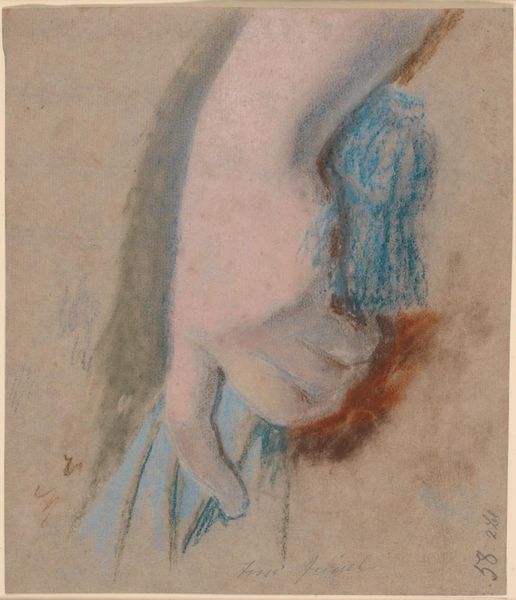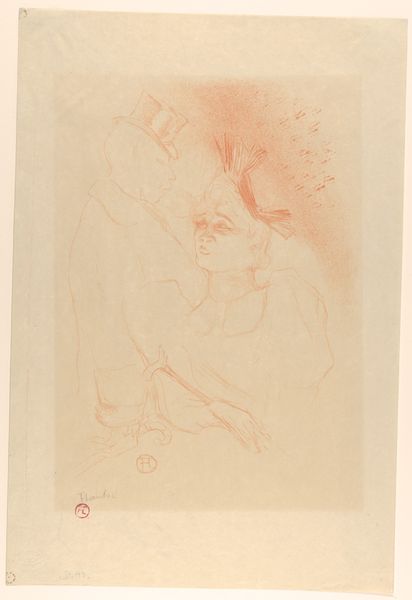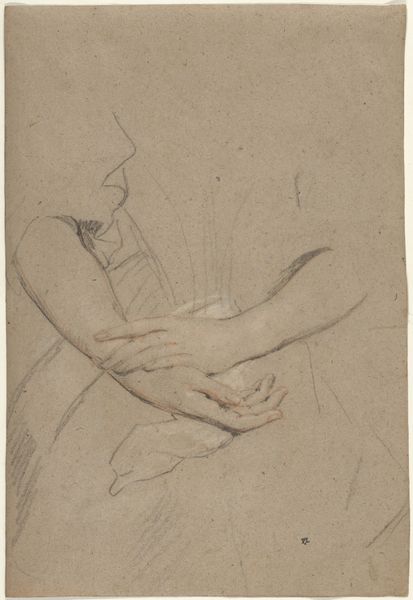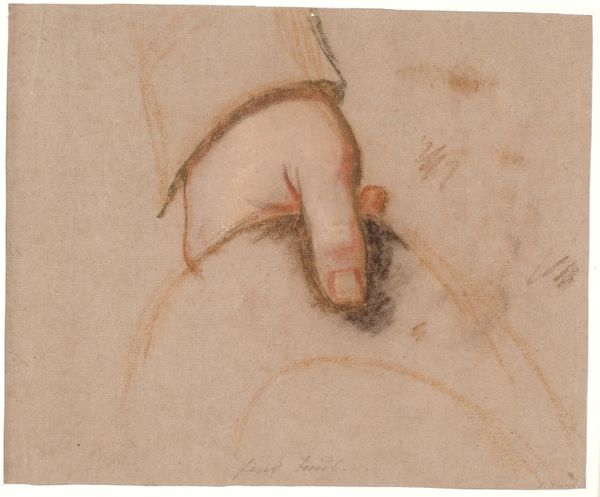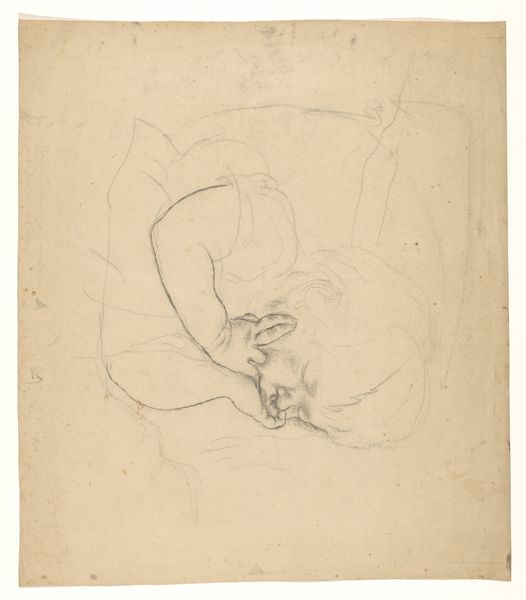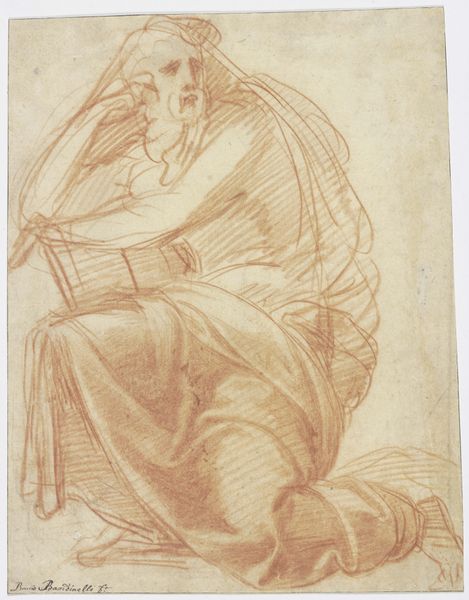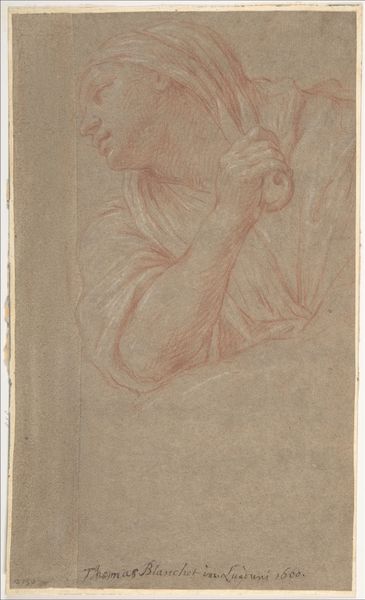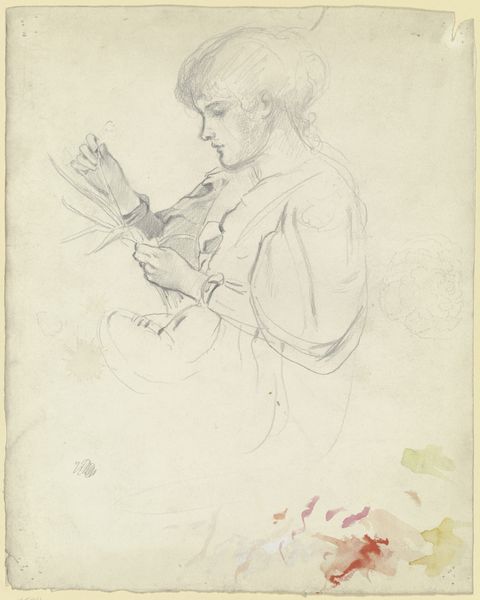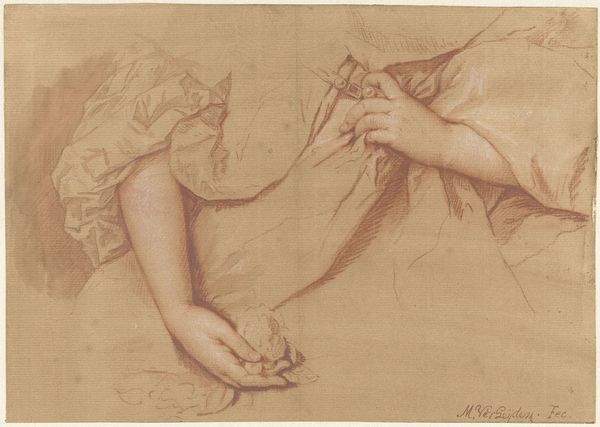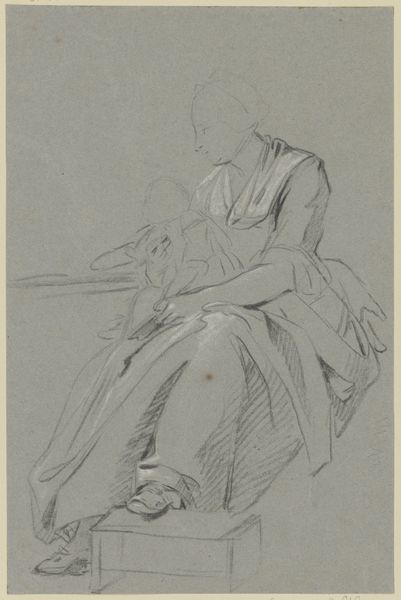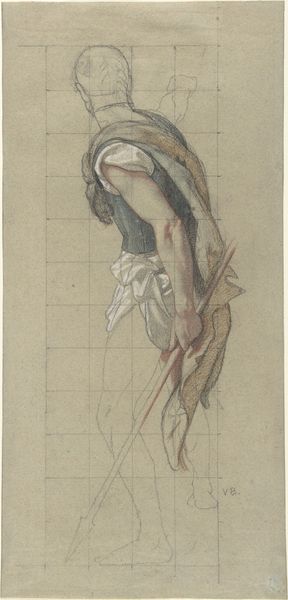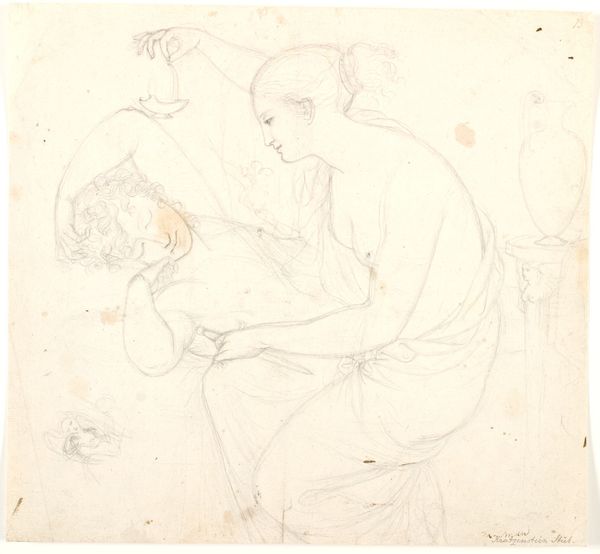
Studie af en kvindes højre arm, holdende et slør; forarbejde til portrættet af grevinde Constance Bernstorff, født Knuth 1788 - 1791
0:00
0:00
drawing, pastel
#
portrait
#
drawing
#
neoclacissism
#
pastel chalk drawing
#
pastel
Dimensions: 338 mm (height) x 210 mm (width) (bladmaal)
Curator: Editor: So, here we have Jens Juel's "Study of a Woman's Right Arm, Holding a Veil," a pastel drawing from around 1788-1791. It feels incredibly delicate and intimate, almost like a private glimpse. What’s your interpretation of this study? Curator: This is a preparatory study, so we're seeing the artist work through the specifics of pose and light before committing to the final portrait. I find it interesting to consider the power dynamics at play. Juel was commissioned to portray Countess Constance Bernstorff, embedding her within a certain visual language of status and beauty. But this study also reveals a kind of negotiation between artist and sitter, and what elements contribute to an impression of her power or vulnerability. What does the veil suggest to you? Editor: That's a really interesting perspective. I hadn't thought about the negotiation involved in a commissioned portrait like that. The veil… perhaps it’s about modesty, or concealing something? Maybe it is indicating that the subject has agency of her public image and power dynamic over onlookers. Curator: Exactly. It could also symbolize the performative aspect of identity, particularly for women of the aristocracy. How much of herself is the Countess choosing to reveal, and how much is dictated by social expectations and artistic conventions? The Neoclassical style, too, lends itself to ideals of virtue and restraint, even as it flirts with sensuality. Editor: So, you're saying that even in what seems like a simple study of an arm, there are layers of social and political meaning embedded within the choices of composition and style? Curator: Absolutely. Art isn't created in a vacuum. Examining the historical context, including the roles of both artist and sitter, helps us to unpack these deeper meanings. Do you find this shifts your initial perception of the work? Editor: Yes, completely. I initially saw delicacy, but now I see a complex interplay of power, identity, and representation. Curator: And that's precisely why art history, when coupled with the perspectives of critical theory, is such a vital lens. There is more here than technique. The drawing makes a statement about the agency that noble women possessed, especially given their position and its relative historical time period. Editor: I'll never look at a portrait the same way again! Thanks, that was very helpful!
Comments
No comments
Be the first to comment and join the conversation on the ultimate creative platform.
